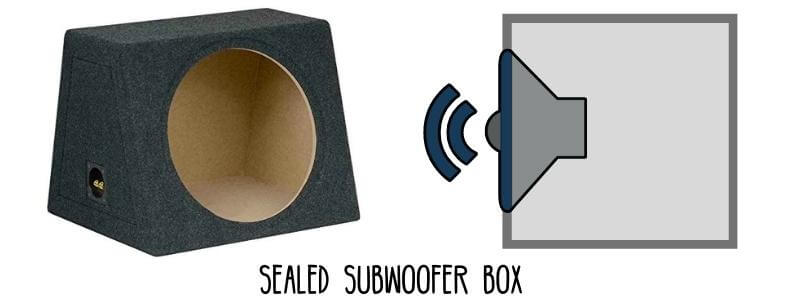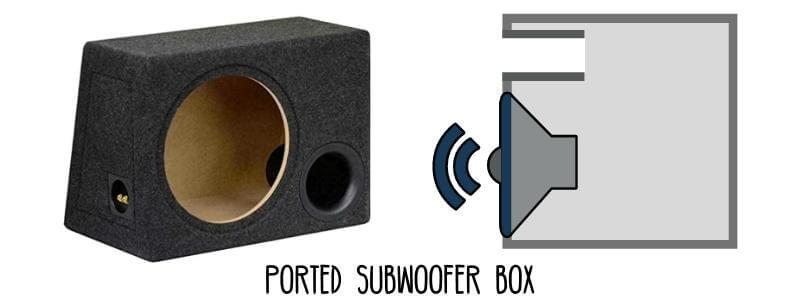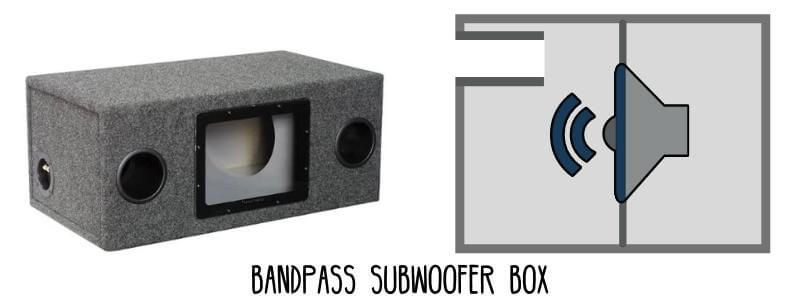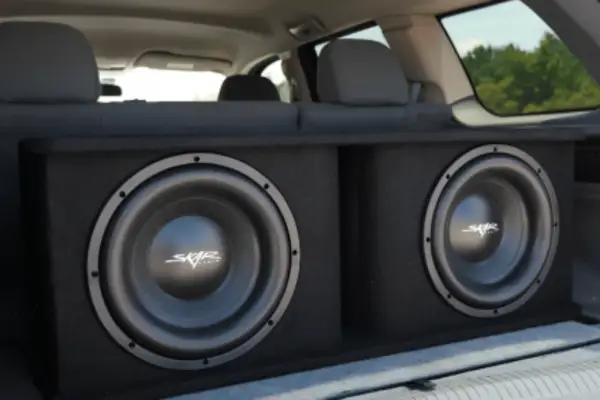Choosing The Right Subwoofer Box For Your Vehicle
Getting the right subwoofer box for your vehicle is a tricky choice, and anyone who installs a subwoofer in their vehicle has more than size and RMS to consider.
Reproducing the bass exactly the way you desire means getting the right subwoofer enclosure, it is one of the most important parts of a subwoofer and will have a big outcome on the bass reproduction and sound quality.
The one you get will determine whether the bass your sub produces is tight or boomy, so you should know what type of bass you want before thinking of getting a subwoofer box, and even a subwoofer for that matter.
The two most popular types of sub boxes are Sealed and Ported, while a smaller niche of audio nerds like Bandpass boxes.
A sealed enclosure will give you the tight and accurate bass, whereas a ported box will ensure your subwoofer produces wider boom and with it more volume. A bandpass is like a more complex combination of the two, and the outcome is very loud volume within a narrower frequency.
Here we offer an introduction into the three main types of subwoofer boxes, and which one might be best for you.
Sealed Subwoofer Boxes
A sealed subwoofer box is an airtight box that your subwoofer is loaded into, and they’re usually more compact than other sub enclosures.
As already stated, a sealed box helps your subwoofer produce tight, and what we call more accurate bass. You will be able to hear the crisp bass with no ringing boom that resonates and reverberates long after the notes are played.

This is due to the sealed subwoofer box being sealed with no vent. The sealed air inside the enclosure absorbs the movement of the woofer and smooths out the cones movement so there is no aftermath of ringing and so you can hear the bass pronounced more tightly and accurate.
Using a sealed sub box means you will use more power than if you were to use any other enclosure. This is because the air pressure behind the cone needs more power to produce the same amount of volume as a ported box would need.
Ported Subwoofer Enclosures
Ported subwoofer boxes have a vent (port) in them that allows air to get in and out. They’re usually bigger than sealed boxes, and so will generally take up more space in your trunk.
You will get more volume and the bass will be boomy, with each bounce wider. It’s the type of bass that will reverberate, but isn’t as clear as the bass a sealed sub box will produce.
Ported subs hit harder and deeper because of the air flowing in and out of the port. The vent redirects the sound from behind the cone and combines it to the sound coming from the front of the cone, and this is why the boom is much louder.

Because of the combined bass making it easier for a ported box to blast out the volume, it will need less power and you will be able to use a smaller amplifier to get the volume you need, than if you use a sealed box.
As well as getting more volume with a ported sub enclosure, it could also benefit your subwoofer in the long run as the airflow keeps it cooler than a sealed sub box can.
Bandpass Sub Boxes
Bandpass Subwoofer Boxes are a popular choice for many audio nerds, because of the extreme volume they can produce.
A bandpass box is a dual chambered box, which also means they’re usually pretty big so you’ll be taking up more space. That extra size also means they’re extra loud, however. It’s like a sealed enclosure with a ported enclosure added to the front of it.

The difference between a bandpass and a regular ported subwoofer box is that in a ported box, the port is in the same enclosure as the rear of the driver. With a bandpass, however, the port and the rear of the driver are in separate enclosures, and the soundwaves emerge from the ported side.
Common genres that bandpass boxes suit are Reggae, Rap and Hard Rock because of the deep bass they are known for. Although it should be noted that not all subs are suited to bandpass boxes, because they can be complex to tune.
So which is better: Sealed, Ported or Bandpass?
It’s a common question, and the truth is the correct answer is within you, and what type of bass you like.
While I wouldn’t dismiss bandpass enclosures, if you’re new to car audio, I would steer clear of them. They’re big, they can be difficult to fine tune, and you can get what you really want with a sealed or ported box
Sealed subwoofer boxes reproduce the low frequencies more accurately, so if you like tight and accurate bass that you can feel, this is for you. The sealed air acts as a shock absorber, so the cone is more controlled, and so you get less of the reverberating bass. They’re also smaller and will take up less space in your trunk.
Ported enclosures hit harder and louder and the bass is of the boomy, shake your car type. This is due to the vent that allows airflow and with it more volume and lower and wider bassline.
So the answer to your question is do you prefer tight or boomy bass? The answer to that will tell you which type of subwoofer box to get. And don’t forget to break in your new subwoofer.

I am a passionate and skilled car audio enthusiast with 15 years of experience in the industry. My journey started when I replaced my first set of factory car speakers, sparking a deep love for high-quality sound. Since then, I have worked as a representative for renowned brands like Kenwood and Alpine.
With a background in both retail and distribution, I have developed a comprehensive understanding of the car audio market. Currently a certified (MECP) installer in the Mobile Electronics industry, my expertise lies in delivering top-notch audio installations. My knowledge, coupled with my genuine passion, makes me the go-to professional for all car audio needs.

